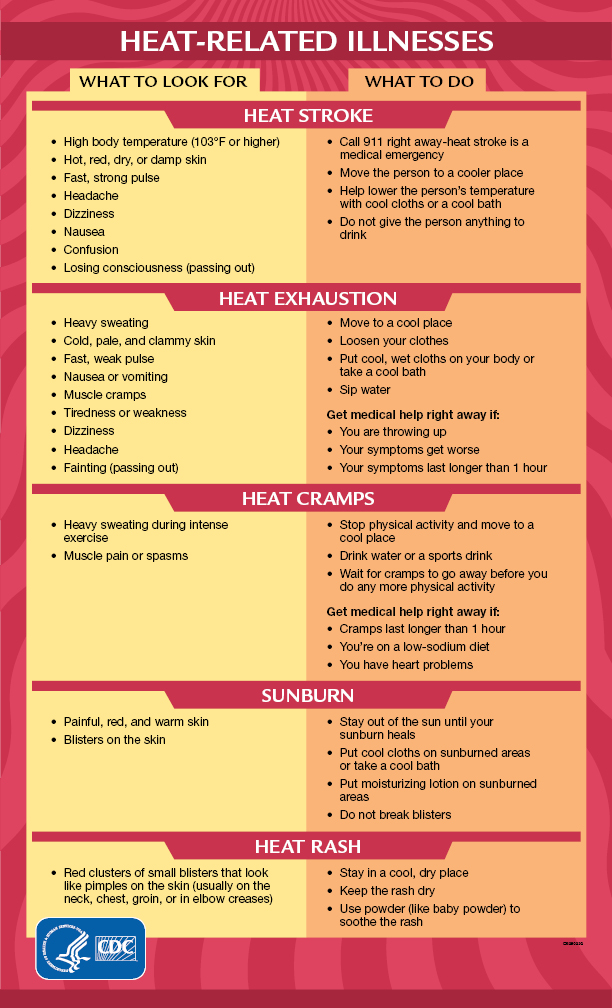This summer much of the United States has seen record-breaking temperatures. June 2021 was the hottest month on record in the United States, and August promises no relief. With temperatures soaring, many workers are vulnerable to heat-related illness and even death.
More than 15 million people in the United States have jobs that require them to be outdoors, but heat can impact indoor workers as well. Factories, warehouses, foundries, and kitchens often get dangerously hot.
Between 1992 and 2017, heat stress injuries killed 815 U.S. workers and seriously injured more than 70,000, according to the Occupational Safety and Health Administration. Overall, more than 65,000 people visit the emergency room for heat-related stress each year and about 600 die from heat, according to the Centers for Disease Control and Prevention.
Workers experience heat exhaustion, which can cause nausea, dizziness, and fainting and in extreme cases, the heat can lead to a life-threatening spike in body temperature. But a recent study shows that higher temperatures are also linked to more workplace injuries overall, including falls from scaffolding, wounds from machinery, and collisions with industrial vehicles. Heat fatigue interferes with alertness, slows down a worker’s reactions, and even decreases worker productivity, according to the working paper.
By law, under the Occupational Safety and Health Administration’s “general clause,” employers are required to keep workplaces “free from recognized hazards.” In other words, employers are responsible for their employees’ wellbeing when they are working in potentially dangerous conditions.
That being said, there are no federal workplace safety standards for heat at this time. But some states have set their own. In July, the Oregon Occupation Safety and Health division adopted temporary emergency rules after a series of heatwaves. These require employers to provide sufficient water and shade to workers, grant workers 10-minute breaks every two hours once temperatures reach 90 degrees, monitor employees for signs of heat-related illnesses and conduct adequate training to provide employees and managers with information about heat-related illnesses. These are common-sense general practices that employers may want to consider.
Keeping workers safe starts with being alert to the symptoms of heat-related illnesses.
What to look out for
Keeping workers safe starts with being alert to the symptoms of heat-related illnesses:
- headaches
- dizziness
- nausea
- losing consciousness
- heat cramps (sweating intensely and muscle spasms)
- heat rash (small clusters of red pimple-like bumps on the skin)
- sunburn
- confusion, irritability
- excessive sweating or no sweating at all when they should be

What to do
The Occupational Safety and Health Administration developed a Quick Card with tips to prevent heat illness in the workplace:
- Provide a lot of cool water to workers close to the work area. At least one pint of water per hour is needed.
- Modify work schedules and arrange frequent rest periods with water breaks in shaded or air-conditioned areas.
- Gradually increase workloads and allow more frequent breaks for workers new to the heat or those that have been away from work to adapt to working in the heat (acclimatization).
- Designate a responsible person to monitor conditions and protect workers who are at risk of heat stress.
- Consider protective clothing that provides cooling.
- Encourage employees to:
– Know signs/symptoms of heat illnesses; monitor yourself; use a buddy system.
– Block out direct sun and other heat sources.
– Drink plenty of fluids. Drink often and BEFORE you are thirsty. Drink water every 15 minutes.
– Avoid beverages containing alcohol or caffeine.
– Wear lightweight, light colored, loose-fitting clothes.
If a worker shows signs of heat-related illness, call a supervisor for help. If the supervisor is not available, call 911. Move the worker to a cooler/shaded area and remove outer clothing. Fan and mist the worker with water; apply ice (ice bags or ice towels). Provide cool drinking water. IF THE WORKER IS NOT ALERT or seems confused, this may be a heat stroke. CALL 911 IMMEDIATELY and apply ice as soon as possible.

